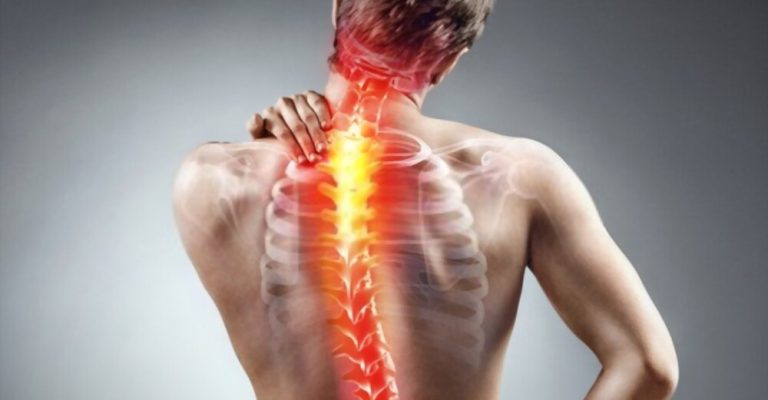
Paralysis below the neck is often caused by damage to a nerve in the upper cervical spine. Due to its high mobility and low rigidity, the cervical spine is particularly vulnerable to damage. Quadriplegia is characterized by paralysis of both the upper and lower extremities.
Many people with quadriplegia learn to successfully handle the results of the condition and enhance their quality of life, albeit it often requires significant adaptations to their way of life. The difficulties of being paralyzed from the neck down and coping strategies will be discussed.
The outlook for someone with a spinal cord injury highly depends on the damage. The medical professionals treating you will assess the degree of your spinal cord damage by determining whether it is complete or incomplete.
Any motor function or sensation below the point of damage is lost after a complete spinal cord injury since the spinal cord has been transected. This indicates that no connections have been made between the brain and regions below the point of damage. On the other hand, if a portion of the spinal cord below the lesion site is spared, the patient may be able to feel sensations or move some of the affected body parts.
Due to their adaptability, the neuronal connections that survive spinal cord damage are crucial to the patient’s rehabilitation. In addition, thanks to neuroplasticity, which allows the brain to change and rearrange its neural connections, it may be possible to retrain the parts of the brain that were damaged by a spinal cord injury.
Hence, the higher the chance of recovery, the greater the number of intact brain circuits. Incomplete spinal cord injuries may have a wide variety of functional outcomes. Still, as long as the lesion is partial, certain neuronal pathways should be preserved, and recovery of the performance below the injury level should be feasible. The reasons why a person could have temporary paralysis below the neck following a spinal cord injury are discussed following.

Spinal shock describes the temporary loss of reflexes, motor control, and sensation below the level of injury following a spinal cord injury. It is caused by spinal cord swelling, which can significantly reduce blood flow. Our bodies need blood to fuel cellular activity. Without it, the body can start to become dysfunctional.
As a result, many individuals mistake their incomplete spinal cord injuries for complete ones. Depending on the severity of the injury, spinal shock can last anywhere from a few days to several months. It isn’t until the swelling subsides that functions below the level of injury may begin to return.
As a result, many individuals mistake their incomplete spinal cord injuries for complete ones. Depending on the severity of the injury, spinal shock can last anywhere from a few days to several months.
It isn’t until the swelling subsides that functions below the level of injury may begin to return. Therefore, it’s a good idea to speak with your medical team about whether they believe you are in spinal shock or not.
The likelihood of further problems after a spinal cord injury increases in proportion to the severity of the first lesion. The primary aftereffects of quadriplegia are:
Pressure sores are more likely to develop in people with spinal cord injuries due to their inability to move and feel. When people sit or lie in one position for too long, they risk developing pressure sores. However, when pressure is applied continuously, it may lead to irritation and eventual skin collapse.
Typically, bony parts of the body, such as the elbows, knees, ankles, and hips, are the sites of pressure sore development. Pressure sores may be avoided by getting up and moving many times daily.
If you need a wheelchair for mobility, it is recommended that you do pressure reliefs every half-hour while seated and that you switch postures every couple of hours when lying down. Those who are entirely paralyzed or very feeble will need the assistance of a caregiver at least once a day to alleviate this strain.
Those who can utilize a motorized wheelchair may benefit from the chair’s tilt-back feature, which allows the user to recline back and relieve strain on their lower back and legs. It’s a good idea to discuss pressure-relieving wheelchair pillows with your counselors since they are available. Still, if you’re experiencing discomfort from pressure, switching positions may help.
Injuries to the spinal cord at the T6 level or above have been linked to developing a disorder called autonomic dysreflexia. The primary symptom is a sharp increase in blood pressure in response to stimulation of regions below the site of damage.
In addition, autonomic dysreflexia is often brought on by squeezing into too-tight clothing or jewelry, having a full bladder or intestines, being exposed to very cold or hot temperatures, or experiencing dermatitis. To put it another way, the body is unable to unwind since the SCI is blocking the brain’s signals.
Autonomic dysreflexia also manifests with the following symptoms:
The cause of autonomic dysreflexia must be determined if any of these symptoms can be alleviated. As a result, you should feel better if they don’t get them to a doctor right away.
Paralysis below the neck limits the patient’s ability to move voluntarily. In addition, bone density and muscle mass decrease if you don’t use your limbs and put your body through the motions on a regular basis. Besides raising one’s vulnerability to damage, this also has the potential to slow one’s metabolism.
Passive range of motion activities, in which a caregiver assists a patient in moving through a series of motions, have enhanced muscle stimulation, range of motion, and overall blood flow. In a similar vein, consuming fewer calories is appropriate when your level of physical activity drops. For example, people often need to reduce their food consumption after a spinal cord injury to prevent becoming overweight.
Paralysis below the neck might make maintaining a healthy internal temperature difficult. After suffering a spinal cord injury, you may have trouble controlling your body temperature due to impaired feeling. As a result, both overheating and alarmingly low body temperatures pose a larger threat to people.
You should be aware of the environment and try to stay out of the excessive heat. It’s also a good idea to include a spray bottle, some extra clothing, and some water in case you need to cool down or warm up gradually.
As a result of a breakdown in signals connecting the brain and the body, spasticity causes uncontrollable muscular spasms. Overactive and constricted muscles result from the brain’s inability to deliver signals for relaxation. This might cause tense and jerky spasms in the affected person.
Spasticity, if not properly handled, may lead to persistent discomfort below the site of damage and, in extreme cases, contractures that severely limit mobility.
The diaphragm is a significant breathing muscle that may be affected by damage to the higher spinal cord. When the diaphragm isn’t being actively controlled, breathing becomes difficult. Therefore, based on the precise location of the lesion in the cervical area, those with weakness from the head down might require ventilator help to breathe.

Immediate medical attention is crucial to stabilize the individual and prevent further damage. Once stable, a tailored rehabilitation program is essential to maximize recovery potential. This may include physical therapy, occupational therapy, and speech therapy, focusing on improving mobility, muscle strength, coordination, and activities of daily living.
The use of assistive devices such as wheelchairs, braces, and mobility aids can enhance independence and improve mobility. Adaptive techniques and strategies can help individuals perform daily tasks, communicate, and engage in recreational activities.
Regular exercises targeting a range of motion and muscle strength can prevent muscle atrophy, enhance circulation, and improve overall physical functioning. Respiratory exercises and techniques are crucial to maintain lung capacity and prevent respiratory complications.
Coping with the emotional and psychological impact of quadriplegia is crucial for overall well-being, so accessing counseling, support groups, and therapy is recommended. Adopting a healthy lifestyle that includes a balanced diet, regular exercise within one’s capabilities, and proper self-care can contribute to overall well-being and support recovery.
Ongoing care and support from medical professionals, rehabilitation specialists, caregivers, and support networks are essential for sustained recovery and a fulfilling life. Recovery from quadriplegia is a gradual and ongoing process, and a multidisciplinary team can significantly contribute to improved quality of life.
When the spinal cord is damaged above the cervical spine, the victim has paralysis below the neck. Significant lifestyle adjustments will be necessary after suffering from impaired motor control and feeling across the body. Still, rehabilitation therapies can assist you in becoming more adaptable and increase your level of mobility.